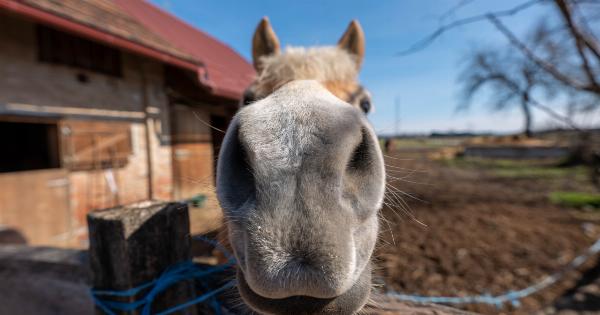Bronchiolitis is a common viral infection that affects the small airways called bronchioles in the lungs. It mostly affects infants and young children under the age of 2.
The condition usually begins with mild cold-like symptoms and progresses to more severe respiratory distress. As a parent, it is crucial to be aware of the symptoms of bronchiolitis to seek prompt medical attention. In this article, we will discuss how to spot bronchiolitis symptoms in your child.
1. Nasal Congestion
One of the initial signs of bronchiolitis in infants is nasal congestion. You may notice that your child’s nose is stuffy, and they may have difficulty breathing through their nose.
This congestion is often accompanied by excessive mucus production.
2. Coughing
A persistent cough is another common symptom of bronchiolitis. The cough may start off as dry and gradually become productive, producing phlegm or mucus. The cough may worsen during the night or when the child is lying down.
3. Rapid Breathing
Bronchiolitis can cause rapid breathing in infants. You may notice that your child’s breathing rate has increased, with more than 40 breaths per minute. Their respiratory pattern may also be shallow or labored.
4. Wheezing
Wheezing is a high-pitched whistling sound that occurs during breathing. It is caused by the narrowing of the airways due to inflammation and mucus buildup. If you hear your child wheezing, it may be an indication of bronchiolitis.
5. Fatigue and Irritability
Infants and young children with bronchiolitis may exhibit signs of fatigue and irritability. The respiratory distress caused by the infection can leave them feeling exhausted. They may also appear fussier than usual and have difficulty sleeping.
6. Fever
In some cases, bronchiolitis may be accompanied by a low-grade fever. However, it’s important to note that not all children with bronchiolitis will develop a fever.
The presence of a fever should prompt you to monitor your child closely and seek medical attention if necessary.
7. Poor Feeding
During bronchiolitis, infants may experience difficulties in feeding. They may show decreased appetite or have trouble sucking or swallowing due to nasal congestion and respiratory distress.
It’s essential to ensure they remain hydrated and seek medical advice if feeding difficulties persist.
8. Cyanosis
Cyanosis is a severe symptom that requires immediate medical attention. It presents as a bluish discoloration around the lips, face, or extremities. Cyanosis indicates a lack of oxygen and can occur in severe cases of bronchiolitis.
9. Difficulty Breathing
If your child is having significant difficulty breathing, such as rapid breathing, flaring of nostrils, or chest retractions, it is a severe symptom of bronchiolitis.
This indicates that the infection has significantly affected their respiratory function and needs urgent medical attention.
10. Dehydration
Bronchiolitis can cause dehydration in infants due to decreased fluid intake. Watch out for signs of dehydration such as dry mouth, sunken fontanelles (soft spots on the baby’s head), reduced urine output, and extreme fussiness.
Conclusion
Spotting the symptoms of bronchiolitis early is crucial for your child’s well-being. If you notice any of the signs mentioned above, it’s important to consult a healthcare professional for an accurate diagnosis and appropriate treatment.
Early intervention can help manage the condition effectively and prevent complications.




























